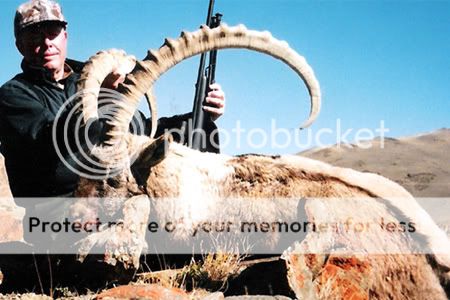|
|
|
|
|
|
|
|
|
 Posted: Thu Jan 25, 2007 6:39 pm Posted: Thu Jan 25, 2007 6:39 pm
 Son of Dawn Son of Dawn(WARNING: Image heavy) Table of Contents post oo1 ≡ Updates & Rules post oo2 ≡ Northern Light Anomaly & Alpine Ibex post oo3 ≡ Raevan Concept post oo4 ≡ Correlations post oo5 ≡ Guardian Concept post oo6 ≡ Funds Updates Feb. 03, 2007 ≡ Raevan concept tinkered with Feb. 03, 2007 ≡ Guardian History being revamped Jan. 29, 2007 ≡ Alpine Ibex picked for captured soul concept Jan. 28, 2007 ≡ Guardian started Jan. 27, 2007 ≡ Raevan concept started Jan. 25, 2007 ≡ Thread set up Rules oo1 ≡ Abide by the Gaian ToS. oo2 ≡ All ideas and artwork, unless specified otherwise, concerning my Raeven, belong to Slan. oo3 ≡ Shop concept and stories concerning [Lab 305] belong to Kyoupiruchi oo4 ≡ Feel free to comment, critique, etc. when the title specifies so. Banner and divider templates belong to 
|
 |
 |
|
|
|
|
|
|
|
|
|
|
|
|
 Posted: Thu Jan 25, 2007 6:45 pm Posted: Thu Jan 25, 2007 6:45 pm
Nothern Lights Anomaly Wikipedia The aurora is a bright glow observed in the night sky, usually in the polar zone. Especially in Europe, it often appears as a reddish glow on the northern horizon, as if the sun were rising from an unusual direction. Some aurora phenomenon were so powerful that they were reported in published scientific measurements, ship's logs and newspapers throughout the United States, Europe, Japan and Australia. It was said in the New York Times that "ordinary print could be read by the light [of the aurora]." MythsThe Finnish name for northern lights is revontulet, fox fires. According to legend, foxes made of fire lived in Lapland, and revontulet were the sparks they whisked up into the atmosphere with their tails. In Estonian they are called virmalised, spirit beings of higher realms. On some legends they are given negative characters, on some positive ones. The Sami people believed that one should be particularly careful and quiet when observed by the northern lights (called guovssahasat in Northern Sami). Mocking the northern lights or singing about them was believed to be particularly dangerous and could cause the lights to descend on the mocker and kill him. The Algonquin believed the lights to be their ancestors dancing around a ceremonial fire. In Inuit folklore, northern lights were the spirits of the dead playing football with humans skull over the sky. The Inuit also used the aurora to get their children home after dark by claiming that if you whistled in their presence they would come down and split their heads from their body to play football with it. In Latvian folklore northern lights, especially if red and observed in winter, are believed to be fighting souls of dead warriors, an omen foretelling disaster (especially war or famine). In Scotland, the northern lights were known as "the merry dancers" or na fir-chlis. There are many old sayings about them, including the Scottish Gaelic proverb "When the merry dancers play, they are like to slay." The playfulness of the merry dancers was supposed to end occasionally in quite a serious fight, and next morning when children saw patches of red lichen on the stones, they say amongst themselves that "the merry dancers bled each other last night". The appearance of these lights in the sky was considered a sign of the approach of unsettled weather.       Alpine Ibex Wikipedia An ibex, also called steinbock, is a type of wild mountain goat with large recurved horns that are transversely ridged in front. Ibex are found in Eurasia, North Africa, and East Africa. Being an excellent climber, its habitat is the rocky region along the snowline above alpine forests of the European Alps. They tend to occupy steep, rough terrain at elevations of 6,500–15,000 feet. Male specimens commonly grow to a height of about 1 meter (3 feet) and reach a weight of about 100 kg (220 lb). Females are usually only half the size of males. Apart from size, males can also be distinguished by their prominent beard. Both male and female ibexes have large, backwards-curving horns although those of the male are substantially larger and can grow to an impressive length of up to 1 m. These horns are used to defend themselves from predators such as wolves, lynxes, bears, jackals and foxes. Small kids may also be susceptible to attacks from large predatory birds such as eagles. The Ibex has a brownish grey coloring in the summer which changes during the winter months to a richer, darker brown. The steinbock has for a long time been regarded as a mystical animal; almost all of its body parts and its excrement were sought after as cures for various illnesses and as ingredients for magical potions. As a result of very extensive hunting, the steinbock was almost extinct as early as the beginning 19th century.      
|
 |
 |
|
|
|
|
|
|
|
|
|
|
|
|
|
|
|
 Posted: Thu Jan 25, 2007 6:50 pm Posted: Thu Jan 25, 2007 6:50 pm
Raevan Concept Raevan Name: Tau Guardian: We`rika Gender: Male Fel Essence: An ordinary glacial shard sits in a beaker but the darnedest thing is, it glows eerie hues of blues, pinks, greens, and yellows without chemicals or artificial lights. Some say the shard stores energy and eventually becomes florescent in consequence. Others have proposed that the shard changes colors to depict one's mood. Soul: Alpine Ibex Hair color: Strawberry blond hair that changes colors (at the tips) likely at its own whim.Hair style: Something wild/harsh and jagged and unkempt. Eye color: Light grey blueSkin color: Light cocoa butterMarkings on skin: A majority of his arms and legs are a mixture of black and white patches. Clothing style: --- (Though I luff all things fur-line! Oh! Maybe modern Inuit clothing!! All furry o.o!!) Wings: Translucent and thick, resembling long ice shards Horns: Solid horns that start in the middle of his skull and curve back behind his head, stopping just above his shoulder blades at a 90 degree angle from each other. Ears: Furry goatling ears Accessories: --- Personality: Very disagreeable at first. Stubborn at times. Moody. Talkative ad nauseum. Aggressive when provoked. Sneaky. A curser (it runs in the family). Can be playful. Loveable when sleepy. Adventurous. Forgetful. Quiet and contemplative when in touch with nature. Forgiving. Introspective at times. <3: Chewing (gum, straws, suckers, anything really), snow, kaleidoscopes, large dogs, petting zoos, soft fur, warm blankets, hiking, jumping, wrestling/scuffling, We`rika (but won't admit it) : Rats, enclosed spaces, hard candy, reading
Alignment: Chaotic Good or Neutral Evil

|
 |
 |
|
|
|
|
|
|
|
|
|
|
|
|
 Posted: Thu Jan 25, 2007 6:55 pm Posted: Thu Jan 25, 2007 6:55 pm
Guardian Concept Guardian Name: We`rika Age: 32 Nationality: Huichol outcast Family: Taáwi and Vantos (Estranged cousins) Height: 5'9" (175 cm) Weight: 153 lbs (69 kgs) Skin: Dark matte tone, rough from a roving lifeHair: Short, buzzed close to the sides and kept long in the middle. Originally black, his hair usually has lingering dyes like rusted reds or stripped white. Eyes: Dark brownSpecifics: Long tapered ears, torn and jagged on the outer shells. Sharp translucent nails. <3: Tau!, drinking, being a home-body, quitting jobs, procrastinating, rats, technology : Family, his heritage, getting up to go to work, annoying people, debtors
Personality: Youth: Rebellious. Spiteful. Naive. Cynical. Obsessed with modern convenience and materialism. Shopaholic.
Adult: Trying hard to subdue his baser characteristics, but his hair-trigger temper and obstinate attitude towards his culture still lingers along with his new reflective character.
History: The Huichol are a spiritual race, descended from ancient Aztecs. After the Spanish Invasion, their roving ways were restricted and they had to support themselves through agriculture. Because growing corn in mountainous area they inhabit is unreliable, many sacred ceremonies are upheld to ensure successful crops.
Much of their culture revolves around the spiritual and religious. These ceremonies are hosted by the shamans of the tribes, becoming the link between the physical realm and the supernatural. They drift from ordinary conscious to heal, direct, guide, retrieve information, contacting the dead, etc.
One of the most important ceremonies the Huichol people conduct is an annual pilgrimage some hundreds of miles away from their native lands. Any who wish to go may do so and there must be at least one shaman present. They walk the same paths their ancestors had for eons. Across their journey, the Huichol use this opportunity to cleanse themselves of sin by reconciling their faults and making a knot for every sin in long strands of horse hair. This reconciliation is quite a carefree time, where adultery is something to chuckle over as if it was someone's first kiss. They then throw the knotted horse hair into the camp fire and their soul is cleansed.
But the main reason for this pilgrimage is for the harvesting of peyote for a years worth of sacred ceremonies. The shamans help the villagers reach Paradise (their version of the afterlife) through the ingestion of peyote which creates an ethereal experience for most.
*In spite of the carefree attitude and modest way of life, tension has grown in the cultural due to the increasingly restrictive country boundaries (which they must cross for their pilgrimages) along with the fickle and meager harvests. Civilization is creeping closer and many new generations are leaving the grasslands and delving deep into urban life.
---
We`rika's ancestors had shallow roots in the Huichol genial tree. Most were b*****d children from Spanish invaders that abandoned them in their mothers' care. Reasons to why their clan left the Huichol faded after several generations as no elders wanted to discuss the sensitive subject, but in their flight they were cursed. With only a meager pack of people, his ancestors became scavengers unable to maintain a stable village or harvest. Their roving lifestyle eventually manifested in their appearance. The scavengers of the wastelands (rats, vultures, jackals, crows, etc.) became their culture as children were born with grotesque deformities like long furry ears, scaly tails, broken wings, and gnarled teeth. Repentance is the only way to dispel such a curse and their culture has become stern and pious. The reconciliation of sin has become no laughing matter and pilgrimages are no longer optional. All who can sin, must go to collect peyote and pray for forgiveness and for their future children.
It was then when jeeps were needed to legally cross country borders that We`rika was born and the curse had been slowly dissipating through each generation. Unfortunately because of the shortages of food, his twin sister was abandoned in the grasslands. Because his (mostly) only defect were long ears and a scaly tail, he became the link between their culture and the urban civilizations. He learned to drive at 11 and with such a shortage of men, he was pushed into apprenticeship under the shaman. He learned ad nauseum the holy days of the calendar, the dances and the process to reconcile sins, healing, communicating with ancestors, gathering information from the spiritual world, and so on. It was grueling training that he resented intensely. His occasional visits to the cities to get supplies didn't help his stirring hate for his sheltered life.
During one visit, too naive for his own good, he became addicted to heroin. His drive back and life subsequently afterward was agony. In a moment of lapse in common sense, We`rika stole baskets of peyote, supplies, and one of the Jeeps and left for the north.
Without knowledge of urban civilization and the naivety to trust all and ignorant of city rules, The outcast Huichol's life is turned upside down. He sold off his wares and his drug addiction grows. He became so self-hating, that coming from a hot climate, he moved to a colder region purely for spite. He became materialistic, looting when he can't afford what he wanted. These escapades eventually led him to prison, charged with manslaughter and drug paraphernalia. Because he was only fifteen and his lawyers argued the topic of his origin, We`rika was handed a lighter sentence of thirty years; however, he was given parole after fifteen years and released on good behavior. During his fourteen years in prison, We`rika learned bad English and how lucky he was to be talented in healing as it was quite the necessity. In the first few years, his actions become more wild and condemning, but after almost losing an arm (from poor circulation during an injection of heroin), the Huichol began to take advantage of his free visits to rehabilitation.
Now, he lives in a small apartment, working three unstable jobs, hiding form debt collectors because of his obsessive need to buy. He's looking for a comfortable job that pays just as comfortably, but without college diploma or even a high school diploma, it is a difficult road.
*Note: Everything occurring after this asterisk is fictitious and does not apply to the Huichol culture of today.

|
 |
 |
|
|
|
|
|
|
|
|
|
|
|
|
|
|
|
 Posted: Thu Jan 25, 2007 6:56 pm Posted: Thu Jan 25, 2007 6:56 pm
|
|
|
|
|
|
|
|
|
|
 Posted: Thu Jan 25, 2007 6:58 pm Posted: Thu Jan 25, 2007 6:58 pm
 Funds FundsItems Fox Ears 13,8oo Fox tail 17,ooo Thank You Letter April 2005 43,ooo Thank You Letter June 2006 49,65o Thank You Letter Jan 2007 13,6oo Total Cost 227,o5o out of 6,ooo,ooo,ooo
|
 |
 |
|
|
|
|
|
|
|
|
|
|
|
|
|
|
|
 Posted: Thu Jan 25, 2007 7:01 pm Posted: Thu Jan 25, 2007 7:01 pm
|
|
|
|
|
|
 |
|
|
|
|
|
|

















